#finno ugric
Photo
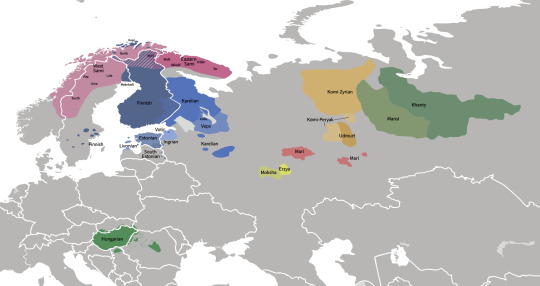
Finno-Ugric languages distribution map
214 notes
·
View notes
Text
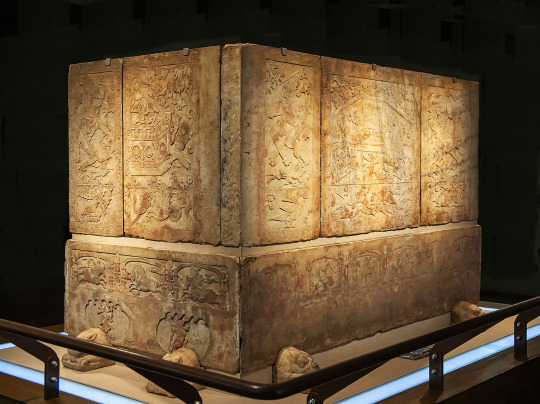

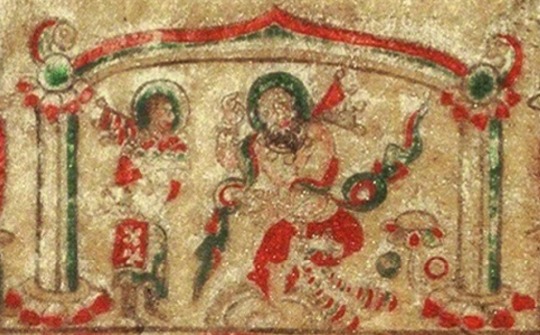

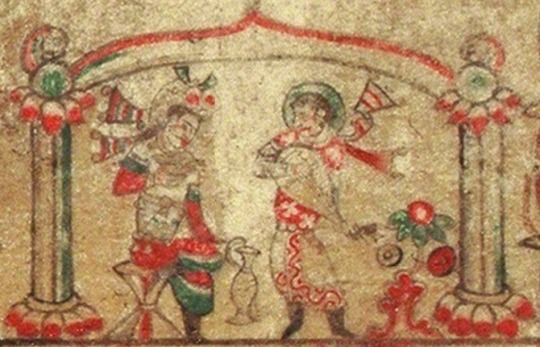




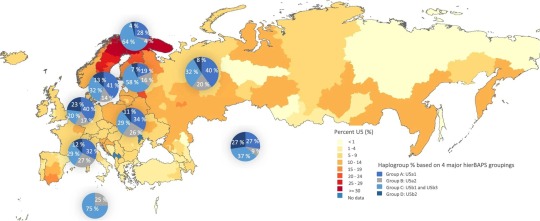
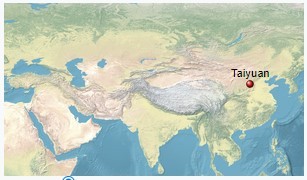
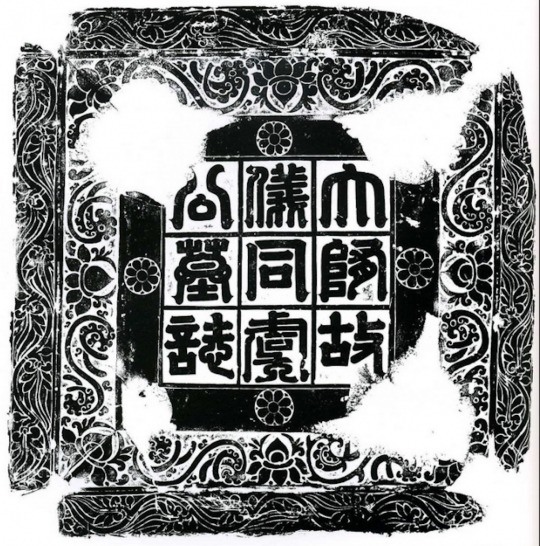
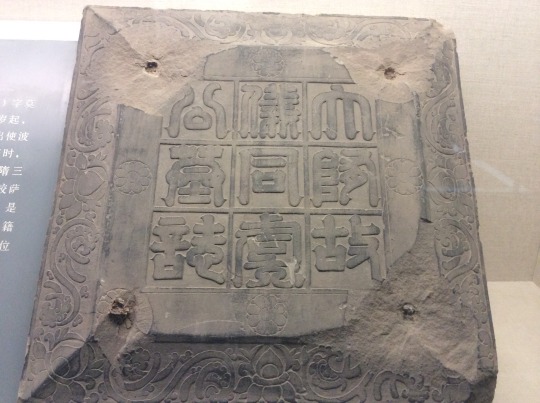

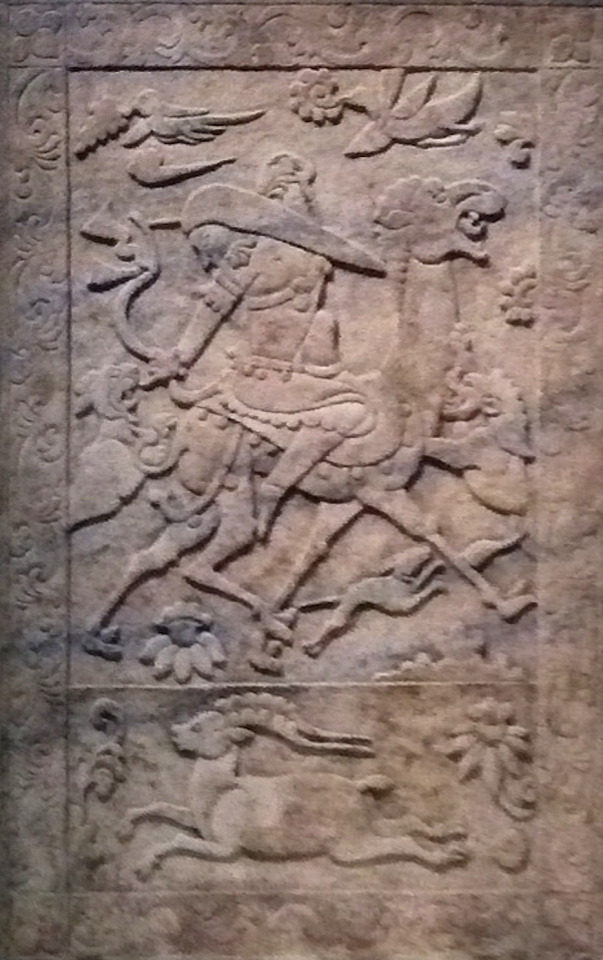
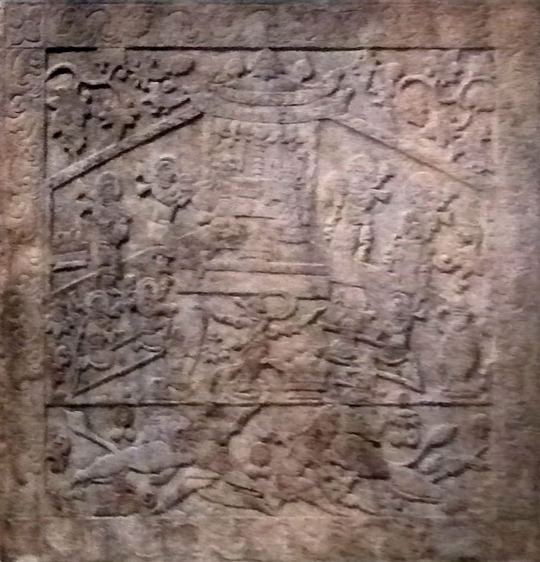
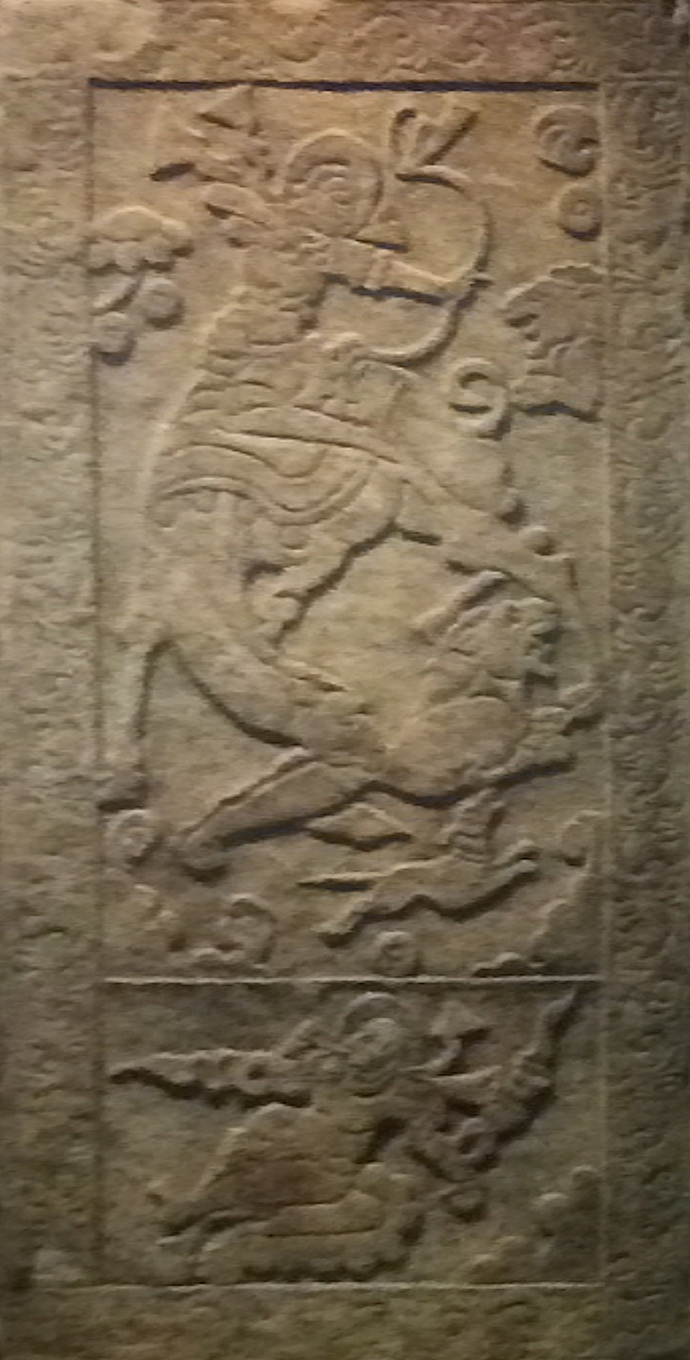
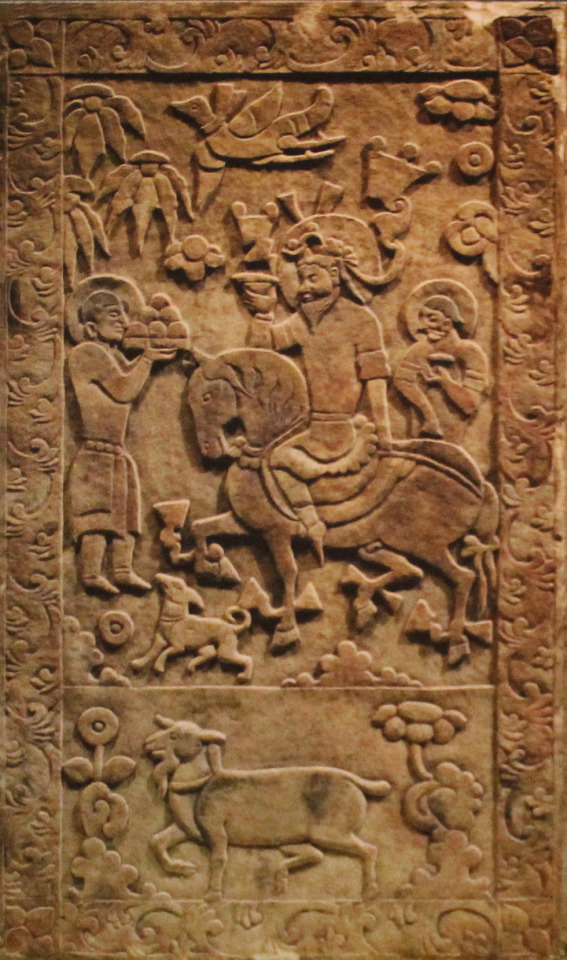
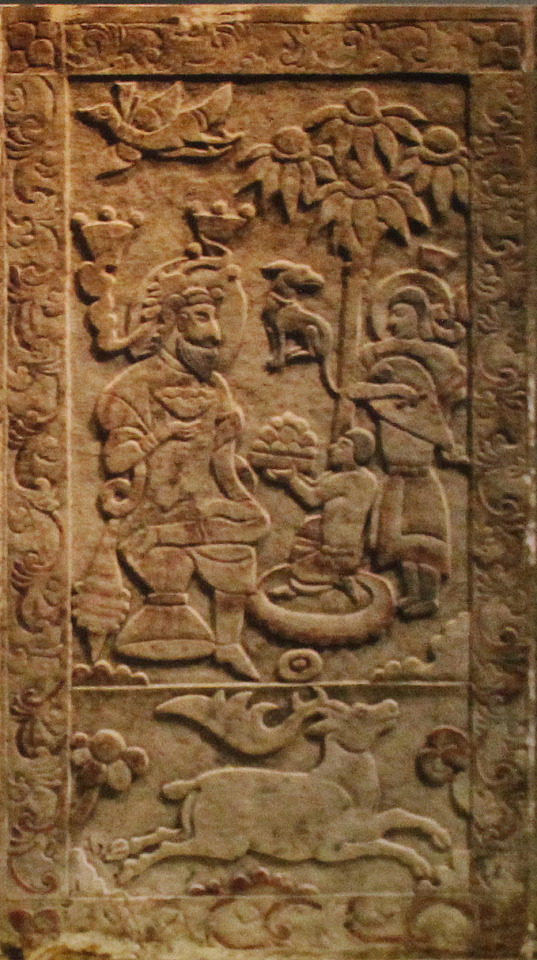
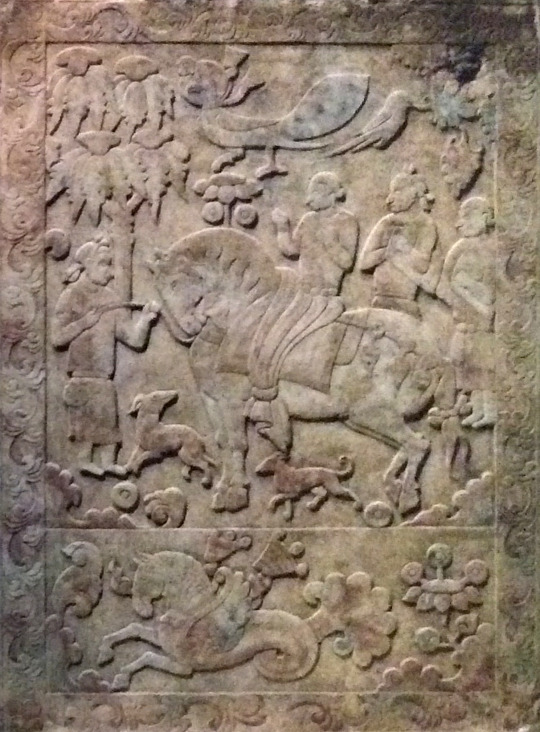
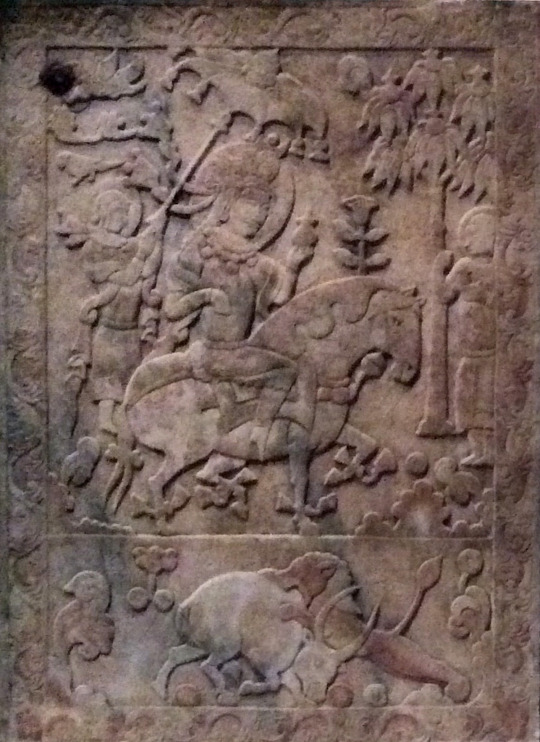
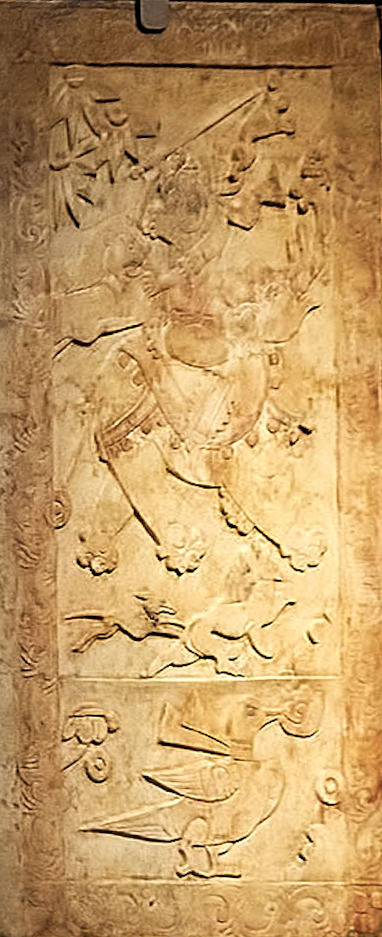
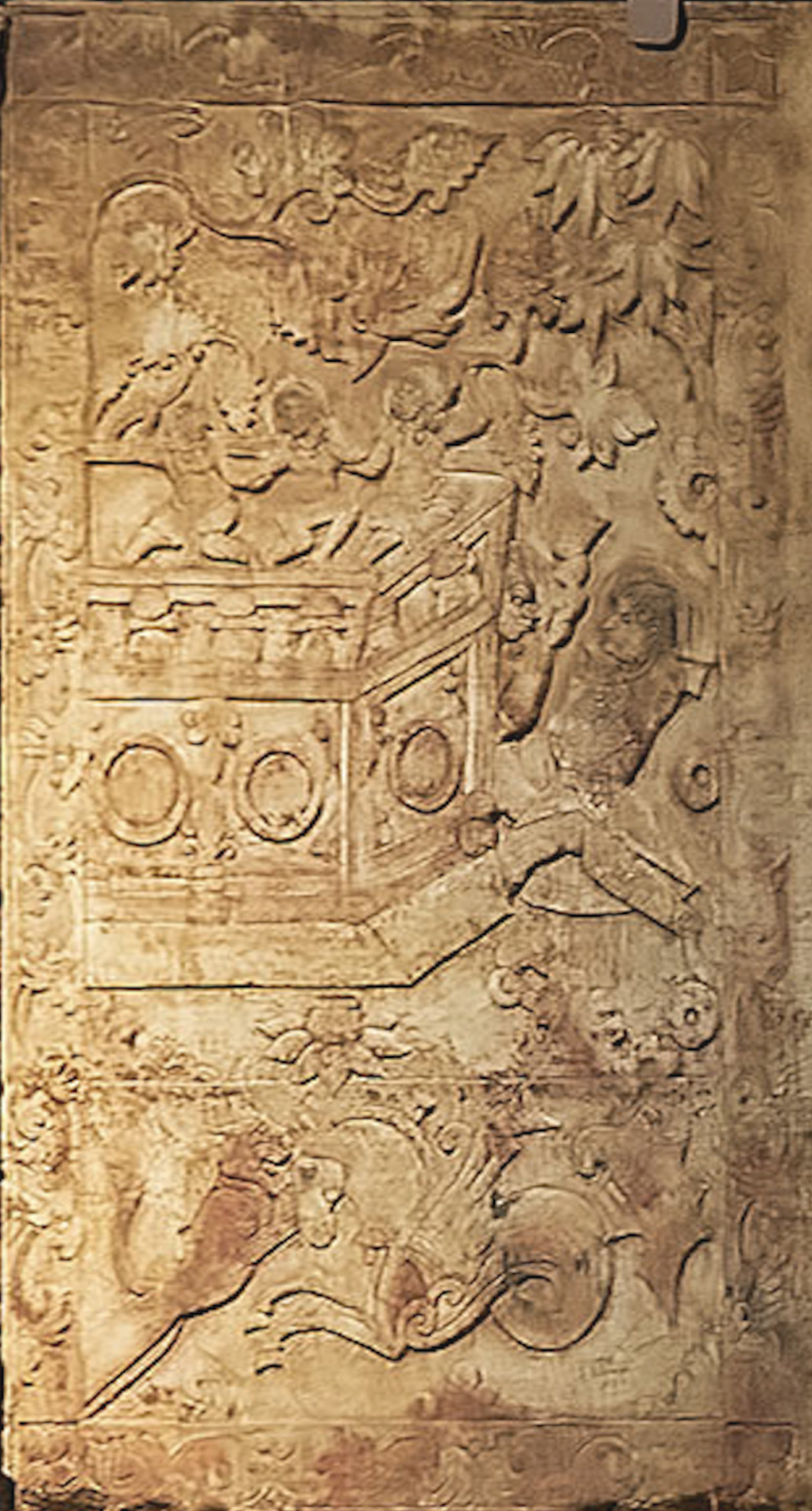

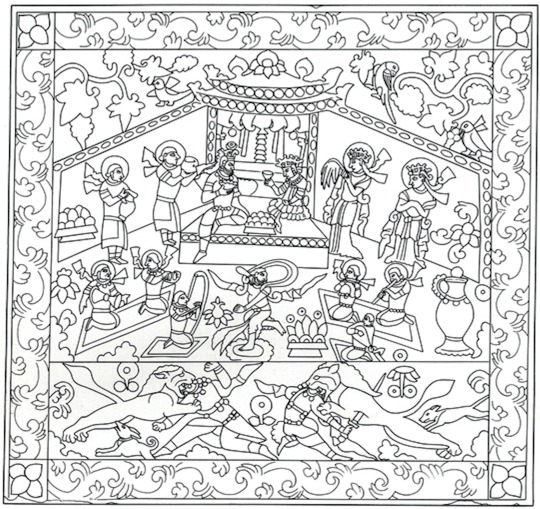
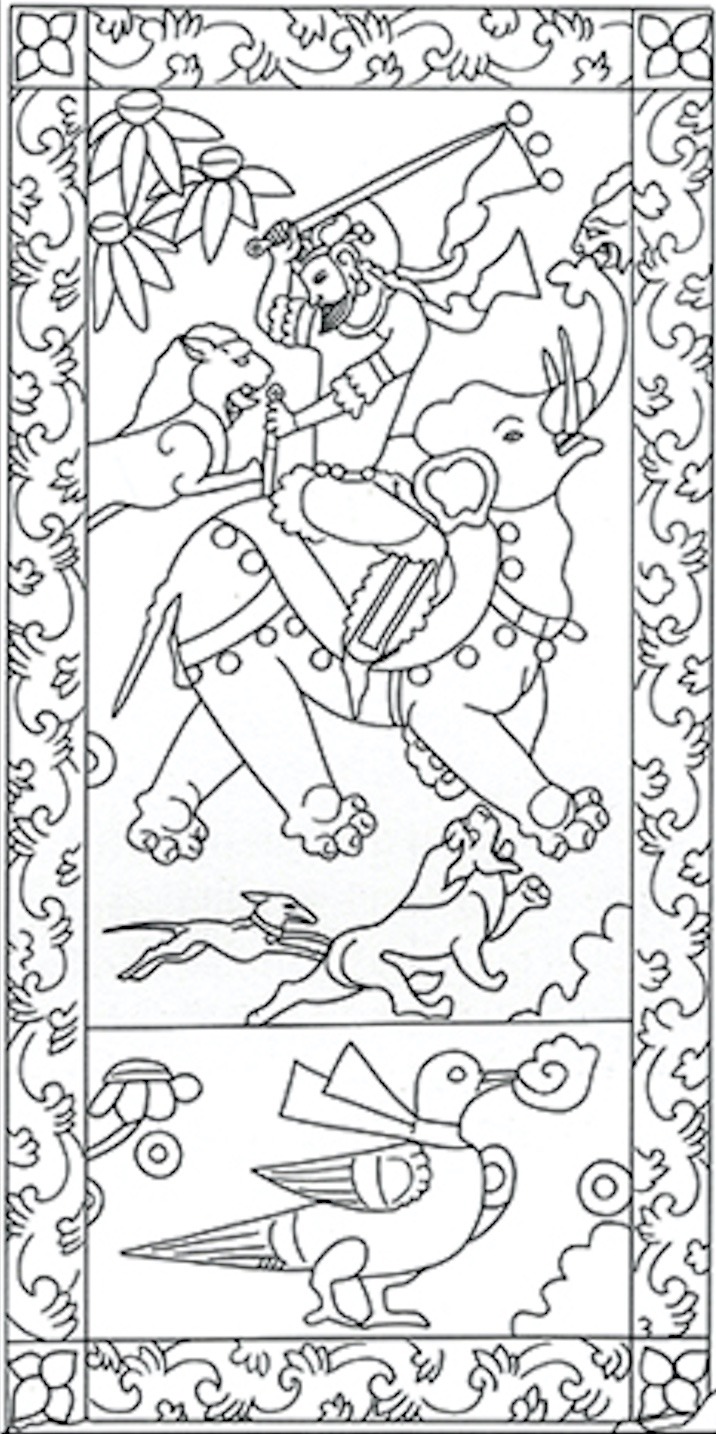
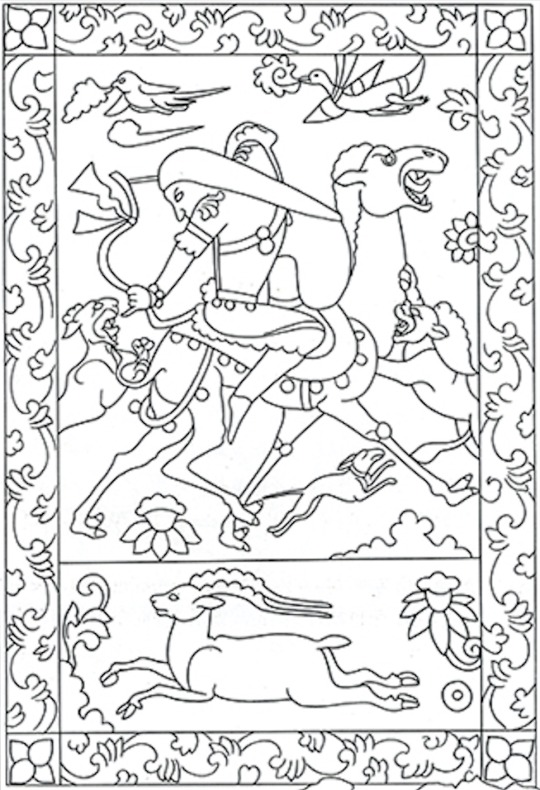



Tomb of Yu Hong 592-598 CE. Link to my blog at bottom with more sources and description of individual images.
This is probably a Sogdian tomb. Interestingly, the man has a haplogroup that was widespread amongst the blue-eyed Mesolithic/Neolithic Western Hunter Gatherers (WHG are probably where blue eyes originated from) and the haplogroup is found today most prominently in Sami, Finns, and Estonians. His wife has a haplogroup found prominently amongst East Asians. Based on her East Asian origins and the inclusion of some Turkic-looking people in the tomb's artwork I would assume she was probably a Turk, herself. The long-haired men without halos (e.g. panel 4) are probably Turks, that was a typical appearance for them during this time period. Men from other surrounding populations such as the Sogdians, Huns, Tocharians, etc. typically kept shorter hair that didn't go past their shoulders. More info:
"The man buried in the tomb went by Yu Hong (Chinese: 虞弘; pinyin: Yú Hóng; Wade–Giles: Yü Hung; 533–592 AD), with Mopan (莫潘) as his courtesy name, who was a Central Asian, probably of Persian or Sogdian origin, and practiced Zoroastrianism. He had settled in Early Middle Period China during the Northern Qi, Northern Zhou and Sui dynasties. This tomb is so far the only archaeological find in the Central Plains region that reflects Central Asian (Western Regions) culture. The epitaph found in the tomb records that he was a noble of the city of Yü-ho-lin / Yuhelin (尉紇驎) in the mysterious Yu country (魚國), assumably for which he is named, because the two characters 虞 and 魚 are homophones.
According to the epitaph, Yu Hong started his career in service of the nomadic tribe at the time, known as Ruru. At the age of 13, he was posted as an emissary to Persia by the Khagan of Ruru, as well as Parthia, Tuyuhun and Yuezhi. Later he went on a mission to the Northern Qi, Northern Zhou and Sui dynasties. He served as chien-chiao sa-pao fu / jianjiao sabao fu (檢校薩保府, lit. “acting director of the office of Zoroastrian affairs”, or “Sogdian affairs”) during the Northern Zhou period. The term sa-pao / sabao (薩保) comes from the Sogdian s′rtp′w, means a “caravan leader”.
He had later served as a provincial governor in the Sui dynasty government, a chieftain of the Central Asian people who had settled in China during that period. Yu Hong died at the age of 59 in 592 AD. His wife survived him by six years, and was buried in the same grave in 598 AD.
A study on ancient DNA reveals that Yu Hong belonged to the haplogroup U5, one of the oldest western Eurasian-specific haplogroups, while his wife can be classified as haplogroup G, the type prevalent in East Asia.
The age of U5 is estimated at between 25,000 and 35,000 years old, roughly corresponding to the Gravettian culture. Approximately 11% of Europeans (10% of European-Americans) have some variant of haplogroup U5.
U5 was the predominant mtDNA of mesolithic Western Hunter Gatherers (WHG) [this is where blue eyes probably originated from].
U5 has been found in human remains dating from the Mesolithic in England, Germany, Lithuania, Poland, Portugal, Russia, Sweden, France and Spain. Neolithic skeletons (~7,000 years old) that were excavated from the Avellaner cave in Catalonia, northeastern Spain included a specimen carrying haplogroup U5.
Haplogroup U5 and its subclades U5a and U5b today form the highest population concentrations in the far north, among Sami, Finns, and Estonians. However, it is spread widely at lower levels throughout Europe. This distribution, and the age of the haplogroup, indicate individuals belonging to this clade were part of the initial expansion tracking the retreat of ice sheets from Europe around 10,000 years ago.
U5 was the main haplogroup of mesolithic European hunter gatherers. U haplogroups were present at 83% in European hunter gatherers before influx of Middle Eastern farmer and steppe Indo-European ancestry decreased its frequency to less than 21%.
Today, haplogroup G is found at its highest frequency in indigenous populations of the lands surrounding the Sea of Okhotsk. It is an East Asian haplogroup. Haplogroup G is one of the most common mtDNA haplogroups among modern Ainu, Siberian, Mongol, Tibetan and Central and North Asian Turkic peoples people (as well as among people of the prehistoric Jōmon culture in Hokkaidō). It is also found at a lower frequency among many other populations of East Asia, Central Asia, Bangladesh, Sri Lanka, and Nepal. However, unlike other mitochondrial DNA haplogroups typical of populations of northeastern Asia, such as haplogroup A, haplogroup C, and haplogroup D, haplogroup G has not been found among indigenous peoples of the Americas."
-taken from Wikipedia
#sogdiana#indo european#ancient china#ancient history#antiquities#history#art#museums#sculpture#statue#ancient#turkic#eurasian#finnish#estonian#finno ugric#genetics
129 notes
·
View notes
Text



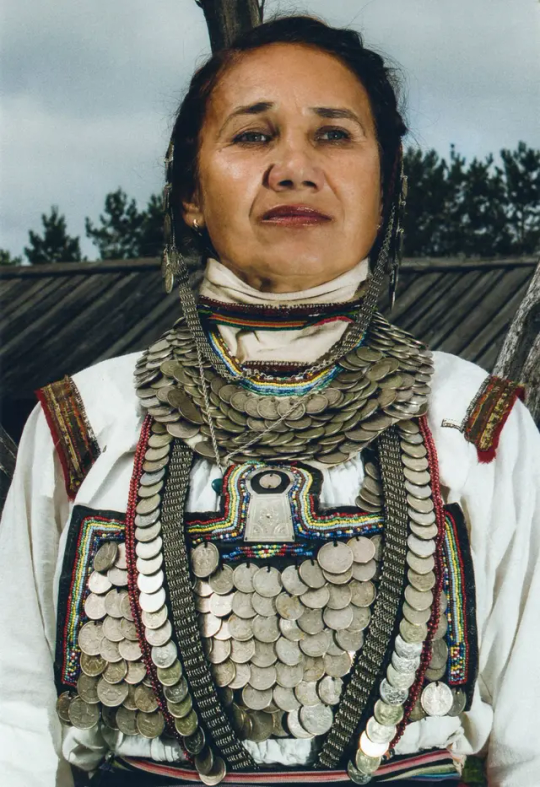

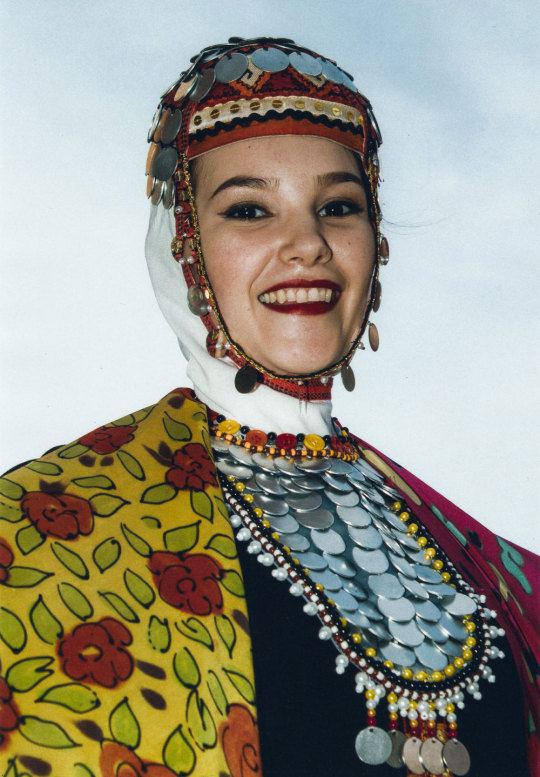
Homecoming: The Young Photographer Reconnecting with the Roots of Russia's Indigenous Mari People - Pictures by Dima Komarov
"Komarov took most of the portraits of the Mari in their traditional costumes in his native village. He also worked at the festival of Mari radio, where the celebrations and songs are held entirely in the Mari language. “There are many costumes for different purposes: for ceremonies, prayers, or weddings. All of the costumes have sophisticated, beautiful embroidery, symbols which can bring luck and good energy and ward off evil spirits. Almost every costume has the colour red. Men traditionally wear canvas shirts and trousers. Traditional jewellery for women, meanwhile, can weigh as much as 35kg,” he explains."
"Komarov’s visual study of Mari culture shows that there is no right or wrong way to relate to one’s heritage — it’s a journey not only across the physical landscape, but the landscape of your memories and emotions. “Every time I’m in my my native town and my grandma’s village, I feel endless love for my native culture and the places where I grew up,” he says. “Even though I sometimes feel like the culture is fading slowly, I hope that people who discover the new interest in Mari traditions will preserve and develop them.”
- Anastasiia Fedorova
103 notes
·
View notes
Text
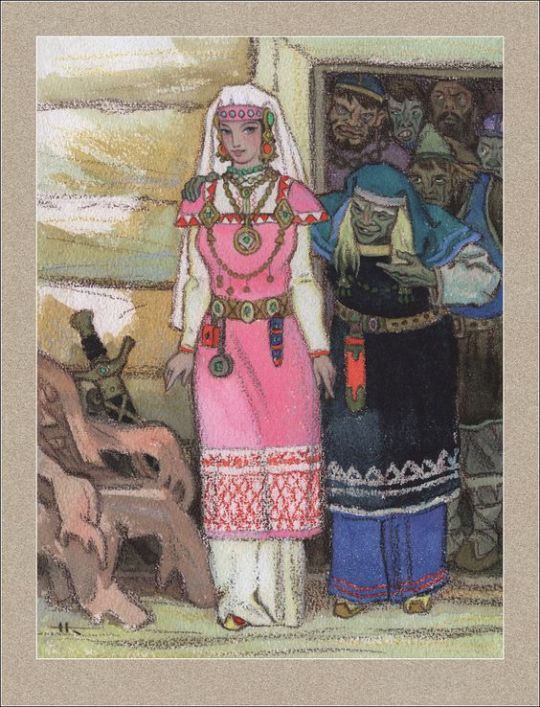
Karelian-Finnish epic Kalevala. Illustrator Nikolai Kochergin.
28 notes
·
View notes
Text
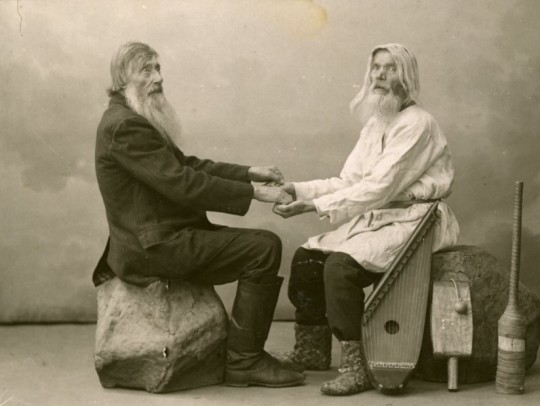
Rune singers Iivana Onoila and Jelisei Valakainen in Terijoki, 1911.
Runesong is a genre of folk music, or a form of oral poetry, historically practiced among the Baltic Finnic peoples. Originating in the Finno-Ugric belt from the Urals (Russia) to Finnskogen (Parts of eastern Norway and Sweden). With the oldest songs being over 4000 years old, the runesong often has a religious content, partly incantatory, but can also have a historical summary content with myths. Some of the incantations were linked to the desire for protection and healing, i.e. the medical rune chants.
#upload#runesong#finnic peoples#finno ugric#forest finns#finnskogen#1900s#1911#rune singers#history#nordic history#tried to summarise it as good as i can most info being from wiki#and photographer is unknown
8 notes
·
View notes
Text
Some sketches of Eowyn, in Udmurt's clothes !
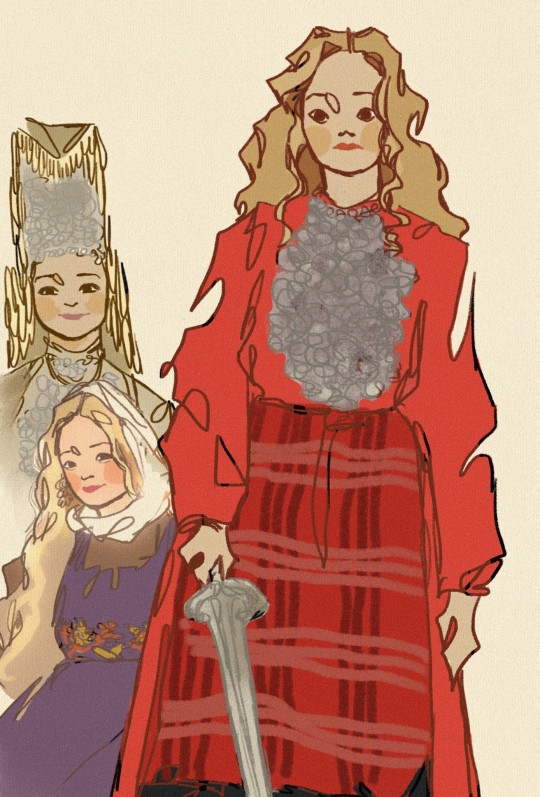
I don't like posting sketches but it's been a while since my last post and I love Eowyn))
#my art#art#sketch#eowyn of rohan#digital drawing#eowyn#lotr eowyn#eowyn my beloved#lotr#lord of the rings#udmurtia#ethnicdress#ethnic#finno ugric#фан арт#удмурт#lotr fanart#ok imma sleep now#she is great
80 notes
·
View notes
Text
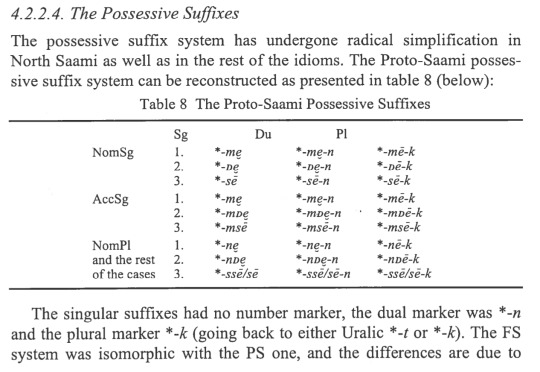
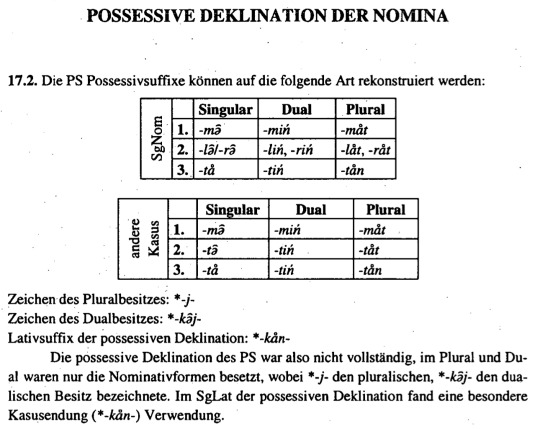
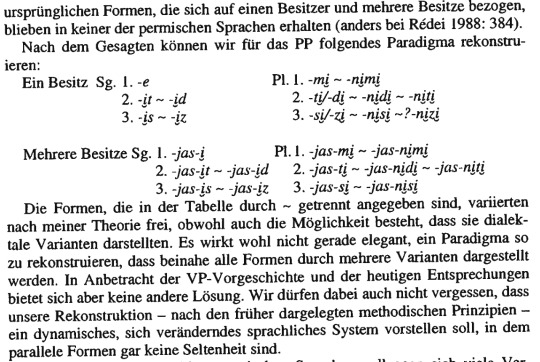
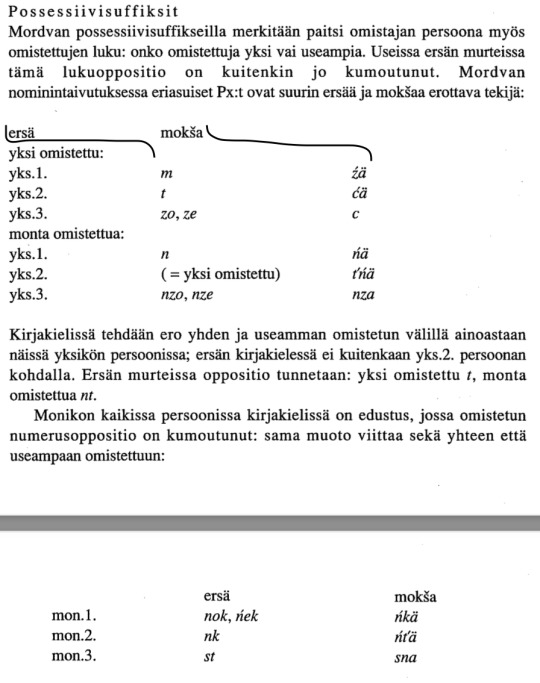
I just remembered that, despite my username, I have not posted anything about possessive suffixes on here so far; to set right this oversight, here is a small sample of possessive suffix systems across the Uralic languages from reference literature I have around
Proto-Samic, from Sammallahti 1998, The Saami Languages: An Introduction
Proto-Samoyedic, from Mikola 2004, Studien zur Geschichte der samojedischen Sprachen
Late Proto-Permic, from Csúcs 2005, Die Rekonstruktion der permischen Grundsprache
Erzya and Moksha (in the nominative), from Bartens 1999, Mordvalaiskielten rakenne ja kehitys
#comparative grammar#comparative linguistics#historical morphology#uralic#finno ugric#samic#samoyedic#permic#mordvinic
40 notes
·
View notes
Text


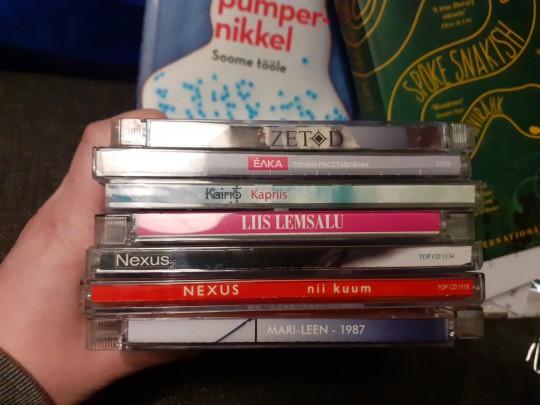


Head Iseseisvuspäeva Eesti 🇪🇪!
Hyvää itsenäisyyspäivää Viro!
My Estonian pop culture and that ancient candle I am still burning.
@unofficial-estonia mentioned Zetod recently and my package from Apollo arrived today with the CD and it's great! Already listened to it twice.
Now watching Tangerines, finally.
26 notes
·
View notes
Text
Happy Finno-Ugric Day to all of my Hungarian, Finnish, Estonian fellows out there!
Our languages are uniqe, awesome and beautiful🤍💙🖤❤🤍💚
#finno ugor languages#finno ugric#finno ugric day#finnugor nyelv#uralic#finland#finnish#estonia#estonian#hungary#hungarian#finn#finnország#észtország#észt#magyar#magyarország#eesti#viro#virolainen#eestiläinen#suomalainen#suomi#unkari#soome#soomemaa#soomlane#ungari
48 notes
·
View notes
Text
The Controversy of Uralic Peoples as Mongoloids


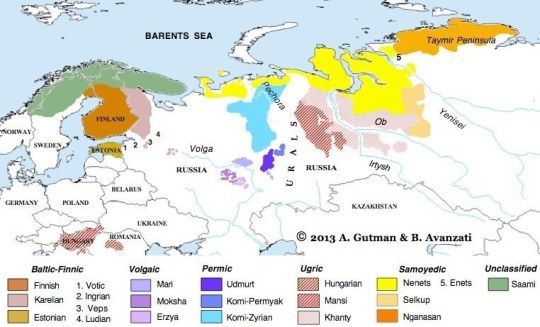

During the age of European nationalism, Finns, Hungarians, and Estonians have often had the concept of their Whiteness challenged. Some individuals have even gone out of their way to classify these three collectives as a part of the Mongoloid (East Asian) race. The strongest evidence for this claim had to do with linguistics. In the 21st century, many individuals only recognize language to be a fluid construct that has no indication of race. However, Europeans of the late 19th and early 20th century perceived language as an ethno-racial marker.
Some Western Chauvinists theorized that their shared identity of whiteness was partly ingrained in their common linguistic heritage. A broad language family identified as "Indo-European" is what loosely bound the white race together. The Finnish and Estonian tongues, however, are derived from the "Finno-Ugric" or "Uralic" language family. Because of this discrepancy, the Uralic peoples were considered Orientalized by their lack of linguistic kinship. In addition to a difference in language, certain Uralic populations also possessed physical features similar to that of East Asians. Most notably, ethnic groups like the Khanty and Mansi have pronounced epicanthic folds and maintain distinct linguistic ties with the Hungarians. These linguistic and phenotypic attributes indicated that, although the Finns, Hungarians, and Estonians appeared to be white Europeans, they were, in actuality, descendants of the Mongoloid race. These racial designations were not merely trivial ideological conflicts either. We see its impacts demonstrated when, in the United States, early Finnish immigrants were not considered white. In their book, Peter Kivisto and Johanna Leinonen note how a Finnish gentleman was denied American citizenship due to his Mongoloid origins.
This condescending view of the Finns was even shared by their fellow kin from Central Europe, the Hungarians. But why? Why would the Hungarians, a fellow Uralic-speaking people, deny any sort of linguistic/lineage tie with the Finns? This rejection is rooted in several factors tied to race, culture, and politics. In terms of politics, Hungarians have often tried to ease themselves into the sphere of pan-Turkism. This was especially prominent during the era of European nationalism when pan-Slavism was perceived as a threat to Hungary. In a reaction to Pan-Slavism, the Hungarians have often hearkened to their steppe ancestry as proof to be included as a part of a Turkic union. In addition to political factors, Hungarian history has instilled a strong sense of pride in their descent from hardened steppe warriors. The Hungarian nationalists envision themselves as the perfect syncretism of equestrian valor and . However, this romantic imagery is removed by asserting that Hungarians are related to the Uralic people. Uralic people, who were not steppe warriors, but lowly fishermen from the baron reaches of northern Europe.
The Nordicists sought to reinforce Hungary's shared origin with the Finns by emphasizing their cranial similarities. In his work Intra-Nordic Differences, Suvi Keskinen writes:
"Anders Retzius, Professor of Anatomy and Physiology,
developed a skull index to investigate “longskulls” and “shortskulls,”
coming to the conclusion that the Finns, the Sámi, and Hungarians
were to be placed among the Turanian type, understood as of Asian
origin"
Finland's history of being colonized by Sweden only added to the narrative that Uralic people were naturally meant to exist as subjugated people. This was in no way appealing to the Hungarians who sought independence from the Austrian Empire. This degrading portrayal of Finns as a subjugated and primitive race caused Hungarians to distance themselves from any sort of shared identity. In the book Languages and Publics, by Susan Gal and Kathryn Woolard, the authors note that a certain linguist was disgusted at the notion of having any sort of ancestral lineage to the Finns. In contemporary times, however, Hungarians have largely come to accept their place as members of the Uralic language family. Though others may stress the possibility of Turkic roots, one cannot deny the distant Siberian influence present across all Uralic peoples.
As the era of nationalism waned, the focus on race and ethnicity also diminished. The tumultuous aftermath of World War 2 prompted European nations to reconsider their relationships with neighboring countries. This shifting landscape gradually relieved the burden on Finns, Hungarians, and Estonians to constantly affirm their place within the Western sphere. The post-war period brought a nuanced perspective, allowing these nations a respite from the need to continually assert their Western identities.
Book Sources:
Kivisto, Peter, and Johanna Leinonen. “Representing Race: Ongoing Uncertainties about Finnish American Racial Identity.” Journal of American Ethnic History 31, no. 1 (2011): 11–33. https://doi.org/10.5406/jamerethnhist.31.1.0011.
Map Sources:
Morton, Samuel George. 1839. Crania americana or, A comparative view of the skulls of various aboriginal nations of North and South America. To which is prefixed an essay on the varieties of the human species. Illustrated byseventy-eight plates and a colored map., Philadelphia : J. Dobson; London : Simpkin.Marshall & co.
Map of human races (Meyers Konversations-Lexikon, 1885–1890)
#finland#finnish#magyar#hungarian#history#anthropology#nordic#uralic#linguistics#america#united states#sámi#europe#western civilization#maps#turkic#nomad#mongolia#asian#mongoloid#national identity#country#estonia#khanty#finno ugric#carpathians#ethnicity#hungary#european#suomi
2 notes
·
View notes
Text

Ancient Udmurts by Val'ko Töd'y
"BUDINI, an ancient nation in the N.E. of the Scythia (q.v.) of Herodotus (iv, 21, 108, 109), probably on the middle course of the Volga about Samara. They are described as light-eyed and red-haired, and lived by hunting in their thick forests. They were probably Finns of the branch now represented by the Votiaks and Permiaks, forced northwards by later immigrants. In their country was a wooden city inhabited by a distinct race, the Geloni, who seem to have spoken an Indo-European tongue. Later writers add nothing to our knowledge, and are chiefly interested in the tarandus, an animal which dwelt in the woods of the Budini and seems to have been the reindeer (Aristotle ap. Aelian, Hist. Anim. xv. 33).
-1911 Encyclopædia Britannica, Volume 4
...
The Budini are a great and populous nation; the eyes of them all are very bright, and they are ruddy. They have a city built of wood, called Gelonus. The wall of it is three and three quarters miles in length on each side of the city; this wall is high and all of wood; and their houses are wooden, and their temples; for there are temples of Greek Gods among them, furnished in Greek style with images and altars and shrines of wood; and they honor Dionysus every two years with festivals and revelry. For the Geloni are by their origin Greeks, who left their trading ports to settle among the Budini; and they speak a language half Greek and half Scythian. But the Budini do not speak the same language as the Geloni, nor is their manner of life the same. The Budini are indigenous; they are nomads, and the only people in these parts that eat fir-cones; the Geloni are farmers, eating grain and cultivating gardens; they are altogether unlike the Budini in form and in coloring. Yet the Greeks call the Budini too Geloni; but this is wrong. Their whole country is thickly wooded with every kind of tree; in the depth of the forest there is a great, wide lake and a marsh surrounded by reeds; otter is trapped in it, and beaver, besides certain square-faced creatures whose skins are used to trim mantles, and their testicles are used by the people to heal sicknesses of the womb."
-Herodotus, The Histories 4.108
#udmurtia#finno ugric#history#ancient history#finnish#art#herodotus#literature#pagan#paganism#paintings
37 notes
·
View notes
Text
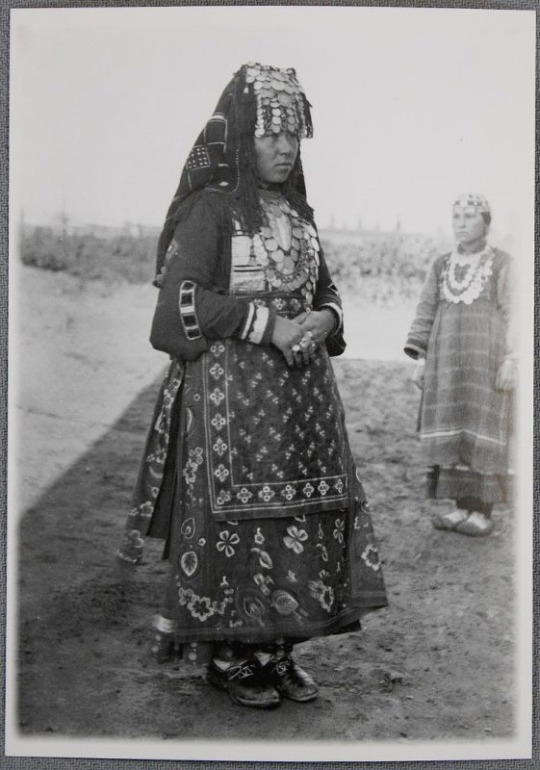
Black and white photography “Udmurt Bride” from the set “Peoples of the Volga Region in photographs by M.E. Yevseviev.”
Late XIX - early XX century
Source: my friend lol
#udmurts#folk costume#historical photos#19th century#20th century#russia#russian empire#finno ugric#volga region
4 notes
·
View notes
Photo
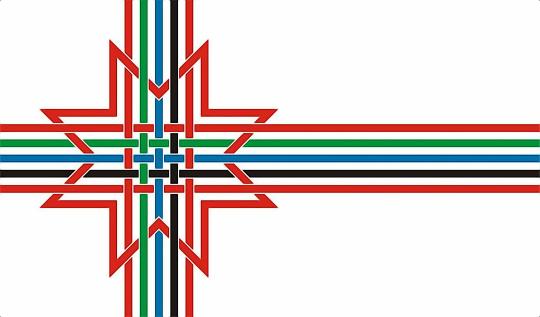
Proposed flag of Finno-Ugric peoples, designed by Polish Finno-Ugric linguist Szymon Pawlas
26 notes
·
View notes
Text
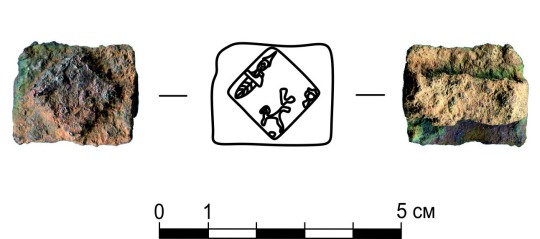

Image of Teryukhan goddess Ange-Patyai with her attributes: a flower, a bird and a dog, which is one of the incarnations of the goddess associated with the chthonic world, 13-15th century
29 notes
·
View notes
Text
Shy Mordvin woman photographed near Buguruslan, Orenburg Oblast, Russian Empire. (1914)

#aesthetic#mordvin#moksha#buguruslan#orenburg#russia#russian oblast#eastern europe#european#russian culture#russian#ugro finnic#finnic#finno ugric#russian empire#russian minorities#russian aesthetic
43 notes
·
View notes
Text

Käzipaikku kukkoloin kera. Oudotja Peltonen.
Karelian embroidery by Oudotja Peltonen.
9 notes
·
View notes